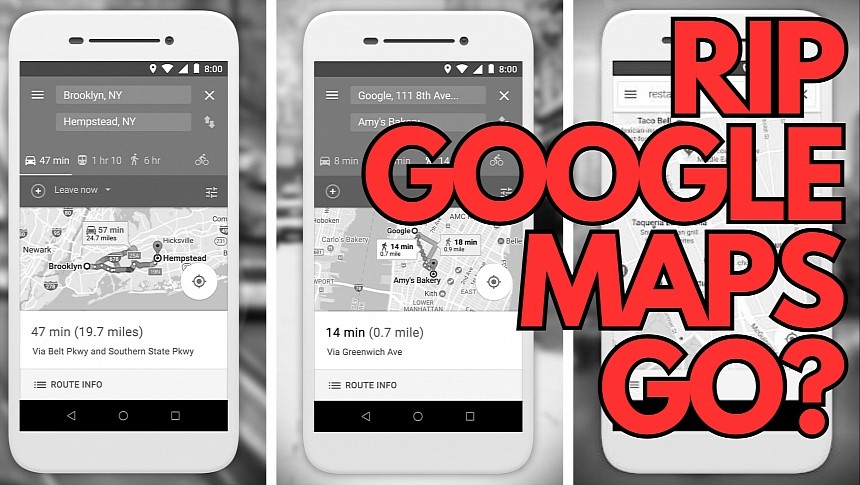If you're a tech-savvy person who likes to keep an eye on what the big guys do, you're probably familiar with Google's frustrating strategy regarding a surprisingly big number of products.
The company launches new ideas, sometimes innovative and serving as living proof of Google's commitment to innovating, invests big in their development, and just when you believe they are here to stay, it shuts them down for good.
Stadia is the most recent example. Launched in 2019 and supposed to put Google on the cloud gaming map, Stadia was one of the most ambitious projects on the market. It launched as a beta in October 2018 before becoming available for everybody approximately a year later.
Google praised Stadia on every occasion, expanding the support to as many platforms as possible. As a service supposed to compete with competing products from Sony and Microsoft, Stadia looked like an integral product for Google's long-term cloud strategy. Three years, one month, and 30 days later, Google killed off Stadia.
Enter Google Maps Go.
Google launched Google Maps Go as a beta in January 2018, and the service eventually became a key part of the Android Go offering.
If you're unfamiliar with Android Go, the concept powering it is clever, helping Google gain market share in a market where dumb phones would otherwise be very appealing. Android Go is aimed at low-end devices with limited resources (hence, available at low prices). These devices typically sell in developing countries where customers can't afford to pay the premium price of a Google Pixel or an iPhone.
Android Go is heavily optimized to make the most of budget processors, limited memory, and reduced storage space. The operating system comes equipped with a dedicated software suite that aligns with its strategy, sporting special tweaks to run on budget hardware. Google Maps Go is part of the package.
As a lite version of Google Maps, Google Maps Go was a Godsend for Android Go users. It offers straightforward navigation in driving, transit, walking, and cycling modes (with a separate component available on the Google Play Store) and allows users to explore the map for nearby POIs. It doesn't come with offline maps and real-time location sharing because of the limited device resources, but for navigation, it's just the right choice for a low-end smartphone.
Now Google Maps Go looks abandoned.
As a reporter covering things that break down in the software we use in our cars, I get tons of emails from readers who came across bugs in the likes of Google Maps, Waze, and Spotify. One of our readers reached out to me to detail a problem he discovered in Google Maps Go in January – a glitch that Marcel says causes the app to crash every time he drives on a specific route – and which he already reported to Google the same month. He says the bug is still there ten months later.
But as it turns out, Google didn't just ignore this error in Google Maps Go. The company ignored all problems in the app, as Google Maps Go hasn't received an update since January. According to the Google Play Store, the latest update for Google Maps Go went live on January 9, 2023, so if you've discovered a glitch since the first month of the year, it should still be there.
Marcel asks a good question: is Google planning to kill off Google Maps Go? I seriously doubt it, but the world has barely talked about the application lately, and Google just seems to go with the trend. Killing off Google Maps Go doesn't make any sense (it didn't for Stadia either, as Google blamed the reduced usage of the service, contrary to the public's perception regarding the growing adoption), but ignoring the application for so long increases the likelihood of people becoming more frustrating with it.
Unfortunately for those using Google Maps Go, their alternatives are extremely limited, and almost no fully featured navigation app runs smoothly on a super-low-end Android device. Google Maps Go was their only solid choice, and Google leaving the application behind is terrible news.
There's a workaround, though. Google Maps Go is a PWA (also known as Progressive Web App). In layman's terms, it's a Google Maps version running in a web wrapper (a browser instance), so it's not exactly a full app. It's your browser (most likely Google Chrome) running the web-based version of Google Maps on the mobile device. It's how Google reduced the footprint on local storage by up to 100 times compared to the full version of Google Maps and how the company reduced overall resource usage.
In theory, you should be able to tackle the lack of updates for Google Maps Go by switching to the web-based version of the service, though this won't be too convenient and straightforward for beginners. Android Go users expect everything to work, mainly because any broken setting could lead to apps eating up unnecessary resources.
The future doesn't look good for Google Maps Go. The company has ignored the app for nearly a year, and I wouldn't expect any significant makeovers soon. I hope I'm wrong, but I think it's time to brace yourselves for bad news.
Stadia is the most recent example. Launched in 2019 and supposed to put Google on the cloud gaming map, Stadia was one of the most ambitious projects on the market. It launched as a beta in October 2018 before becoming available for everybody approximately a year later.
Google praised Stadia on every occasion, expanding the support to as many platforms as possible. As a service supposed to compete with competing products from Sony and Microsoft, Stadia looked like an integral product for Google's long-term cloud strategy. Three years, one month, and 30 days later, Google killed off Stadia.
Enter Google Maps Go.
If you're unfamiliar with Android Go, the concept powering it is clever, helping Google gain market share in a market where dumb phones would otherwise be very appealing. Android Go is aimed at low-end devices with limited resources (hence, available at low prices). These devices typically sell in developing countries where customers can't afford to pay the premium price of a Google Pixel or an iPhone.
Android Go is heavily optimized to make the most of budget processors, limited memory, and reduced storage space. The operating system comes equipped with a dedicated software suite that aligns with its strategy, sporting special tweaks to run on budget hardware. Google Maps Go is part of the package.
As a lite version of Google Maps, Google Maps Go was a Godsend for Android Go users. It offers straightforward navigation in driving, transit, walking, and cycling modes (with a separate component available on the Google Play Store) and allows users to explore the map for nearby POIs. It doesn't come with offline maps and real-time location sharing because of the limited device resources, but for navigation, it's just the right choice for a low-end smartphone.
As a reporter covering things that break down in the software we use in our cars, I get tons of emails from readers who came across bugs in the likes of Google Maps, Waze, and Spotify. One of our readers reached out to me to detail a problem he discovered in Google Maps Go in January – a glitch that Marcel says causes the app to crash every time he drives on a specific route – and which he already reported to Google the same month. He says the bug is still there ten months later.
But as it turns out, Google didn't just ignore this error in Google Maps Go. The company ignored all problems in the app, as Google Maps Go hasn't received an update since January. According to the Google Play Store, the latest update for Google Maps Go went live on January 9, 2023, so if you've discovered a glitch since the first month of the year, it should still be there.
Marcel asks a good question: is Google planning to kill off Google Maps Go? I seriously doubt it, but the world has barely talked about the application lately, and Google just seems to go with the trend. Killing off Google Maps Go doesn't make any sense (it didn't for Stadia either, as Google blamed the reduced usage of the service, contrary to the public's perception regarding the growing adoption), but ignoring the application for so long increases the likelihood of people becoming more frustrating with it.
Unfortunately for those using Google Maps Go, their alternatives are extremely limited, and almost no fully featured navigation app runs smoothly on a super-low-end Android device. Google Maps Go was their only solid choice, and Google leaving the application behind is terrible news.
In theory, you should be able to tackle the lack of updates for Google Maps Go by switching to the web-based version of the service, though this won't be too convenient and straightforward for beginners. Android Go users expect everything to work, mainly because any broken setting could lead to apps eating up unnecessary resources.
The future doesn't look good for Google Maps Go. The company has ignored the app for nearly a year, and I wouldn't expect any significant makeovers soon. I hope I'm wrong, but I think it's time to brace yourselves for bad news.










